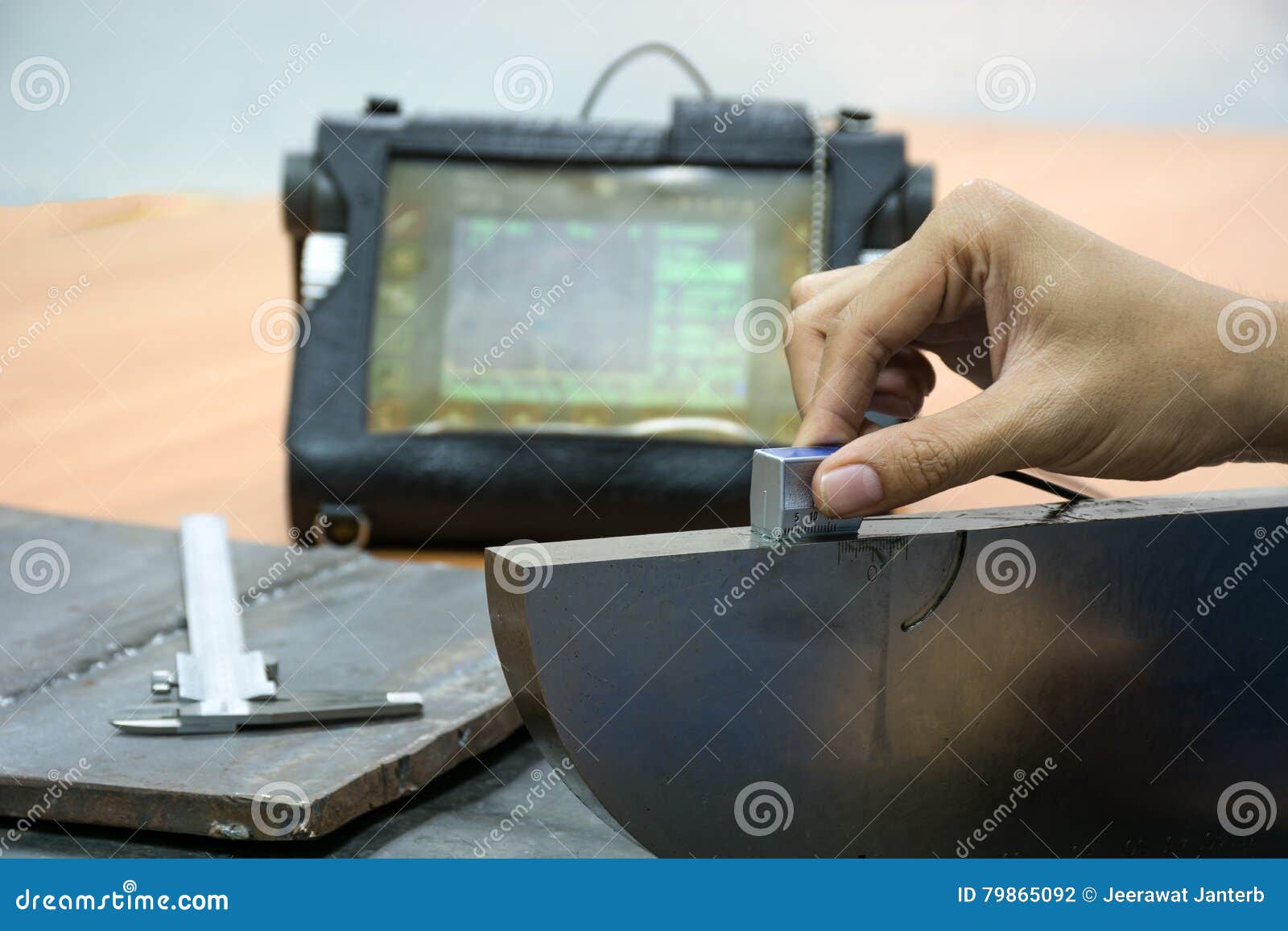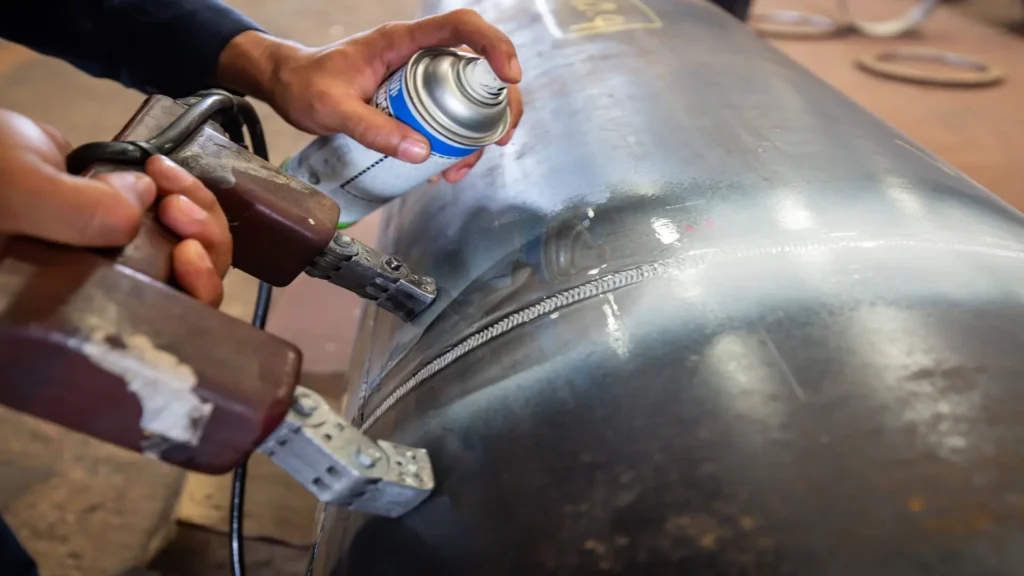How Welding Inspection Madison Guarantees Top Quality and Safety in Fabrication
Wiki Article
Exploring Advanced Tools and Techniques for Accurate Welding Inspection
In the world of welding inspection, the search of accuracy and dependability is paramount, stimulating the advancement of advanced devices and methodologies. Laser scanning advancements and automatic assessment systems, outfitted with fabricated knowledge, are redefining the landscape by reducing human error and improving safety procedures.Ultrasonic Testing Technologies
Ultrasonic testing innovations frequently represent the center of improvements in welding examination modern technologies. These innovations have dramatically boosted the capacity to discover and examine suspensions within bonded frameworks, making sure improved integrity and safety and security - Welding Inspection Madison. Ultrasonic screening uses high-frequency sound waves to pass through products, offering in-depth information regarding inner attributes without causing damages. The most recent growths in this field have concentrated on raising accuracy, rate, and the ability to analyze intricate information.
Additionally, improvements in software program formulas for data analysis have actually improved the precision of flaw discovery and sizing. Automated ultrasonic testing systems now use high-resolution imaging, enabling in-depth assessments of weld high quality. These systems are commonly incorporated with sophisticated visualization devices, which promote the analysis of outcomes.
Radiographic Examination Techniques
While ultrasonic screening innovations have set a high requirement in non-destructive exam, radiographic examination methods remain to play an essential role in welding inspection by supplying one-of-a-kind insights right into product integrity. Radiographic screening (RT) utilizes the usage of X-rays or gamma rays to permeate materials, creating a radiograph that visually represents the internal framework of a weld. This imaging capability is very useful for identifying subsurface flaws such as porosity, additions, and fractures that might not be noticeable with surface area assessments.The process includes placing a radiation source on one side of the weld and a detector on the opposite side. Variations in product density and thickness influence the attenuation of the rays, generating a contrasting photo that precisely defines problems. RT is especially beneficial for checking intricate geometries and thick sections where various other methods might fail.
Despite its effectiveness, radiographic inspection should be conducted with strict adherence to security protocols as a result of the unsafe nature of ionizing radiation. Additionally, the interpretation of radiographs calls for skilled personnel, as the top quality of the analysis directly affects the integrity of the inspection. Subsequently, recurring improvements in digital radiography are boosting picture clearness and analysis effectiveness, strengthening RT's vital function in guaranteeing weld high quality.
Laser Scanning Advances
Accepting laser scanning technology in welding assessment has actually transformed the evaluation of weld high quality and honesty. This innovative approach offers a non-contact, high-resolution ways of catching in-depth 3D information of weld surface areas. Unlike standard evaluation strategies, laser scanning provides quick data procurement, substantially enhancing the efficiency and accuracy of weld evaluations. The technology employs laser beams to develop precise 3D versions, which are essential for in-depth analysis of weld measurements, surface area irregularities, and possible defects.Laser scanning developments have caused considerable renovations in finding and defining surface area imperfections such as porosity, lack of fusion, and damages. The high-resolution data enables examiners to carry out thorough analyses, making certain that welds satisfy strict sector standards. This technique sustains the advancement of electronic documents, promoting long-term quality assurance and traceability.
In addition, laser scanning technology integrates seamlessly with software solutions made for automated defect detection and assessment. The resultant information can be quickly shared and assessed, promoting joint decision-making processes. As sectors remain to require higher standards for weld quality, laser scanning continues to be at the center, providing unrivaled precision and performance in welding assessment.
Automated Assessment Equipments

Automated inspection systems provide the advantage of uniformity, getting rid of human mistake and subjectivity from the examination procedure. They are created to operate in numerous atmospheres, from production floors to remote field sites, ensuring detailed protection. Welding Inspection Madison. These systems can be set to comply with certain welding standards and criteria, supplying comprehensive reports and documents for quality assurance objectives
In addition, the combination of cloud-based platforms promotes the storage space and analysis of substantial quantities of examination information. This makes it possible for trend evaluation and predictive maintenance, allowing producers to attend to prospective problems before they rise. The adoption of computerized evaluation systems is an essential move in the direction of improving the dependability and effectiveness of welding procedures in commercial applications.

Enhancing Safety and Performance
A substantial aspect of enhancing security and performance in welding evaluation depends on the integration of innovative modern technologies that improve operations and alleviate risks. The fostering of advanced non-destructive testing (NDT) techniques, such as ultrasonic testing, phased array ultrasonic screening (PAUT), and radiographic testing, plays a critical role in making certain architectural honesty without compromising the security of the personnel involved. These strategies permit detailed examinations with very little downtime, reducing possible dangers connected with conventional methods.In addition, the application of real-time data analytics and maker knowing algorithms has actually transformed the means assessment information is analyzed. By using predictive analytics, potential flaws can be identified before they materialize into critical failures, making sure timely interventions and maintenance. This aggressive approach substantially enhances operational effectiveness and safety in welding procedures.
Moreover, remote inspection modern technologies, including drones and robotic crawlers geared up with read here high-resolution cams, allow inspectors to analyze hard-to-reach areas without subjecting them to dangerous problems. This not just enhances examination precision this article however additionally decreases human threat. By leveraging these sophisticated devices and techniques, markets can achieve greater safety and security criteria and functional performance, ultimately bring about more reliable and lasting welding examination methods.
Verdict
The combination of innovative devices and approaches in welding assessment considerably improves defect detection and ensures structural integrity. These developments not only raise examination effectiveness however additionally contribute to enhanced safety and high quality assurance in commercial welding applications.
Ultrasonic testing technologies regularly represent the leading edge of developments in welding assessment technologies.While ultrasonic screening advancements have actually set a high requirement in non-destructive assessment, radiographic evaluation strategies proceed to play an integral duty in welding evaluation by offering distinct understandings into product honesty.Accepting laser scanning modern technology in welding examination has reinvented the analysis of weld top quality and honesty. As markets continue to demand greater requirements for weld quality, laser scanning continues to be at the forefront, offering unmatched accuracy and effectiveness in Click Here welding assessment.
Automated evaluation systems provide the advantage of consistency, removing human error and subjectivity from the assessment procedure.
Report this wiki page